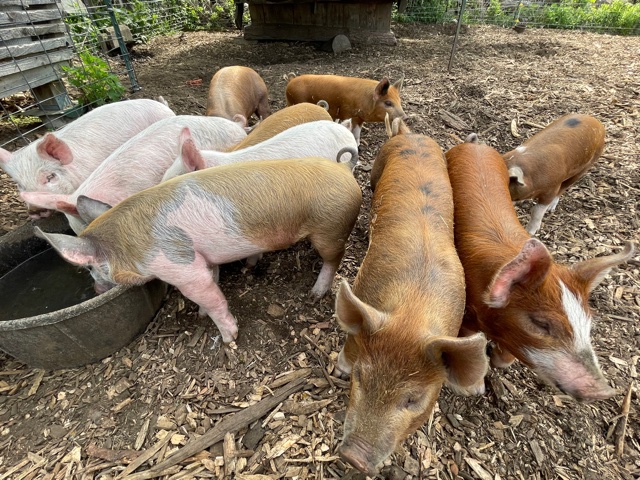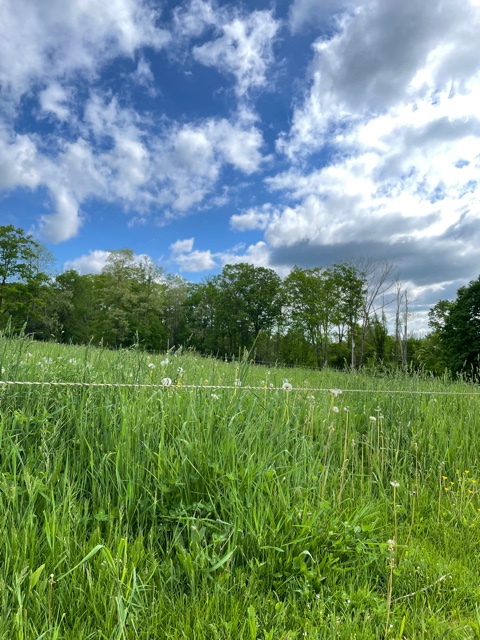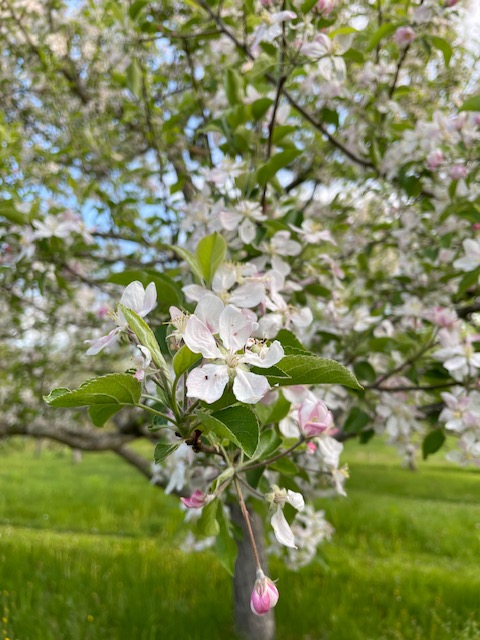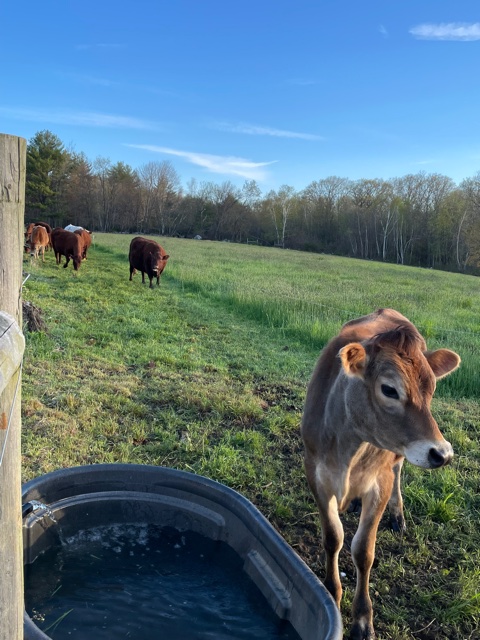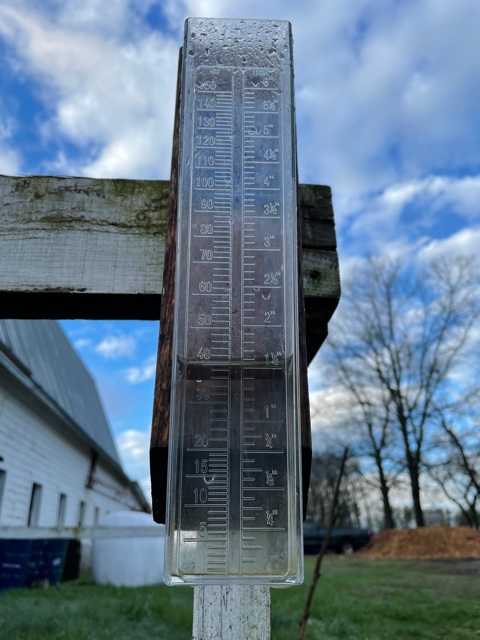Though my data set is awfully small, and my training is certainly not in climate science, on the ground, our weather patterns feel different than those of my memory. It feels to me like we’ve lost some of the middle ground, some of the time when things are moderate, mixed, gradually changing from season to season, a little bit of each. It seems now that we take these leaps from one end of spectrum to the other, skipping the middle ground entirely. In the first week of May I wrote about cold wet weather, detailing several storms that passed over the farm and dropped more than five inches of rain in total over about ten days. Then, all of a sudden, it was summer for a few weeks, with very dry weather and several days with temperatures near or over ninety degrees. Despite the spring melt and the rain that started May, our forest fire danger rating was at High for a good part of May. Now we’re back to the cold and wet, with temperatures Friday maxing out in the fifties, which is forty degrees colder than our afternoon high on Wednesday, and rain forecasted to fall through Monday of next week. The high on Saturday set a record for the lowest high for that date. Though I’m sure the actual data will show a pretty typical progression for this spring’s build towards summer, out on the farm this pattern has felt pretty tumultuous, and I have been yearning for those days where I can feel the chill of early spring behind me, the heat of summer ahead of me, and the two mixing a bit all around me.
We hosted our final spring day trip for visiting students on Wednesday, and despite the heat of the afternoon, I think that we all had a really great time on the farm. The students from Fayerweather School in Boston brought a palpable and inspiring sense of curiosity to the farm, and pushed all of the farmers and animals to provide the experiences and answers they were looking for as they really squeezed everything they could out of their quick visit. We got a lot of work done, spent a lot of quality time with our livestock, and this was a perfect way to finish up our spring season of visits. We’ll take a couple of weeks to get the farm into tip top shape, clean and prep the bunkhouse after more than a year out of the action, and do everything that we can to be ready to start summer programming in the second half of June. I think that we’re all really looking forward to having kids back on the farm for extended stays this summer, and we’re all a little nervous about how we’re going to make it all work with evolving COVID guidance from the state and such a long time since we last ran over-night programs.
The beef herd had been parked in the Circle Pasture complex for about ten days, but on Tuesday it was time to move them along. The Circle Pasture area is more than six acres of good forage, and I think that the herd could have stayed there for a few more weeks actually, but we are trying to move them over all of the pastures to keep everything in reasonable shape, so we decided to pack up and hit the road. Because of changes in our pasture plans to accommodate increased hay production this summer, we had to drive the herd over the full length of the Runway Pasture to reach their next grazing area, and this proved to be a bit of an adventure. Runway, as the name implies, is a long thin pasture that stretches for about a quarter of a mile north/south between the Maggie’s Farm area and the start of the Waslaske hay fields at the south end of our farm. The western edge of Runway is a nice wooded area where the cows can get out of the sun on hot summer days, and they got themselves all mixed up and turned around in there while we were trying to push them down toward Marshmallow pasture and fresh grass. Dave bravely walked into the woods behind the cows to see what was going on in there while Taylor and I carried on ahead calling and trying to lead them in the right direction. There was plenty of bellowing and crashing, cracking wood and trembling trees, and the herd came pouring out of the woods from every spot, kicked up their legs, and rushed past us up the pasture. They wheeled back into the woods and disappeared, Dave went in after them again, and we repeated this whole process over and over again as we slowly worked our way south. I’m not sure what got everyone so fired up, whether it was the long delay since their last move or the excitement of getting into the woods after a long stay in a pasture with no cover, but the whole episode was way more agitated than was really necessary, and the herd, tearing past us, hoofs flashing and dirt clods flying up behind them, the ground shaking as they passed, reminded us of their incredible strength and power. There are only about ten full sized animals out there, with several yearlings and calves mixed in, but their thundering sweeps out of the trees, down the open pasture and back into the trees were breathtaking nonetheless. Everyone finally reached Marshmallow, tore around that pasture for a bit, gave a few final calls, and put their heads down to eat. They emptied the water trough a few times that afternoon.
Taylor and Dave are putting the finishing touches on our pigs summer area out in the woods, and we hope to move those girls out of the piglet yard next week or the one after. They’ll have a nice big deck with an automatic feeder and water, and a long trough for milk from the dairy. Beyond the feeding deck, they’ll have a large electric fenced area that stretches out into the woods, and our hope is that they will spend most of their time out there hunting and rooting for some of their own food. They head in for processing in late fall, so they’ll have more than four months to eat, explore and grow out in the woods. We never put the pigs in the same forested area two years in a row, though we have been leaving their deck in the same location for a few years now. The pigs are super rough on the environment that they root through, and parasites can become established if the pigs return to the same spot for a few years. We rotate areas, giving everything three or four years to rest and regrow before the pigs come back over that ground, and that model has worked well for us. We have dreams of establishing smaller more mobile groups of pigs that we can use strategically throughout the farm, moving them onto areas that need some real disturbance to break some kind of negative cycle, but we have not been brave enough to try that yet.




